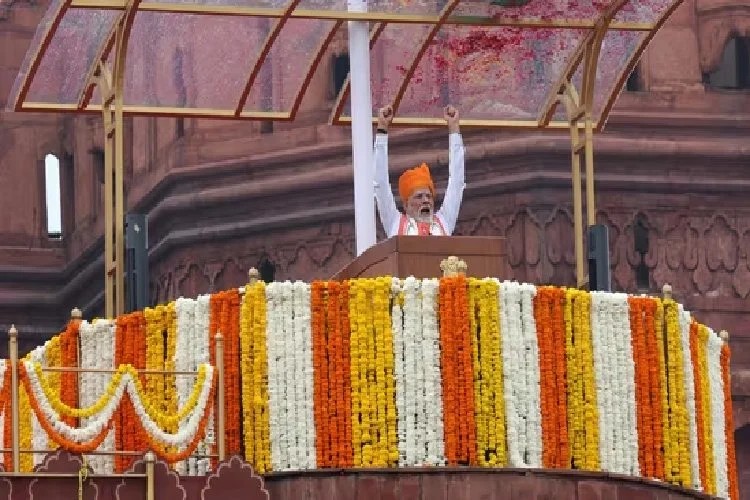

India Unveils a New Shield for Its Skies
In a landmark announcement during his Independence Day address from the Red Fort, Prime Minister Narendra Modi unveiled "Mission Sudarshan Chakra," a monumental initiative to develop a comprehensive, indigenous air defense system. Evoking the imagery of Lord Krishna's divine weapon, the mission aims to create an impenetrable "Rashtriya Suraksha Kavach," or national security shield, to protect India's vital military assets, civilian centers, and critical infrastructure. This ambitious, long-term project signals a paradigm shift in India's defense posture, moving towards a proactive and technologically self-reliant strategy to secure its airspace.
More Than an Iron Dome
Mission Sudarshan Chakra is envisioned as a sophisticated, multi-layered defense network designed to counter a wide spectrum of aerial threats. While drawing comparisons to Israel's famed Iron Dome, India's system is being developed with a far broader and more complex threat matrix in mind. Unlike the Iron Dome, which primarily targets short-range rockets and mortars, the Sudarshan Chakra will be engineered to detect, track, and neutralize a diverse range of advanced threats, including long-range ballistic and cruise missiles, unmanned aerial vehicles (drones), artillery shells, and even emerging challenges like drone swarms and loitering munitions.
The Prime Minister emphasized that the system would have both defensive and offensive capabilities, not only neutralizing incoming attacks but also possessing the capacity to "hit back at the enemy many times over." This integrated system is expected to work in concert with India's existing air defense assets, such as the S-400, Akash, and QR-SAM missile systems, creating a seamless and formidable nationwide shield.
Forged in India: A Pillar of Self-Reliance
A core tenet of Mission Sudarshan Chakra is its deep integration with the 'Atmanirbhar Bharat' (Self-Reliant India) initiative. The Prime Minister made it unequivocally clear that the entire system—from research and development to manufacturing—will be an indigenous effort. "It will be made by the people of our country," he declared, highlighting the central role of the Defence Research and Development Organisation (DRDO) and the nation's youth in this futuristic project.
This commitment to self-reliance is not just about manufacturing; it's about building sovereign capability in critical, next-generation defense technologies. Officials familiar with the project indicate that artificial intelligence will likely play a central role in the system's command-and-control network, enabling real-time threat assessment and response. By investing in a homegrown solution, India aims to reduce its dependence on foreign military hardware and cultivate a domestic ecosystem of defense innovation.
The Strategic Imperative
The announcement of Mission Sudarshan Chakra is not a decision made in a vacuum. It is a direct response to the evolving security landscape and recent provocations. The Prime Minister explicitly linked the initiative to lessons learned from past security lapses, including the 2008 Mumbai attacks, and more recent threats, such as a Pakistani attempt to target Indian civilian infrastructure during "Operation Sindoor" in May. "We cannot afford to be reactive. We must anticipate and prepare," Modi stated, framing the mission as a forward-looking strategy.
He laid out a ten-year vision for the creation of this national security shield, assuring the nation that all places of strategic, civilian, and cultural importance would be protected. This long-term commitment underscores the project's significance as a cornerstone of India's national security strategy for the coming decades, a modern-day Sudarshan Chakra designed for the complex challenges of 21st-century warfare.
Mission Highlights
• A National Security Shield: Prime Minister Narendra Modi announced "Mission Sudarshan Chakra," a major initiative to build a comprehensive, multi-layered air defense system for India.
• Indigenous Development: The entire system will be researched, developed, and manufactured in India under the 'Atmanirbhar Bharat' initiative, with the DRDO playing a key role.
• Broad-Spectrum Defense: Unlike systems focused on short-range threats, this shield is designed to counter a wide array of advanced weapons, including long-range ballistic missiles, cruise missiles, and drones.
• Proactive Strategic Shift: The mission represents a move from a reactive to a proactive defense posture, driven by lessons from past security challenges and a long-term vision for national security.